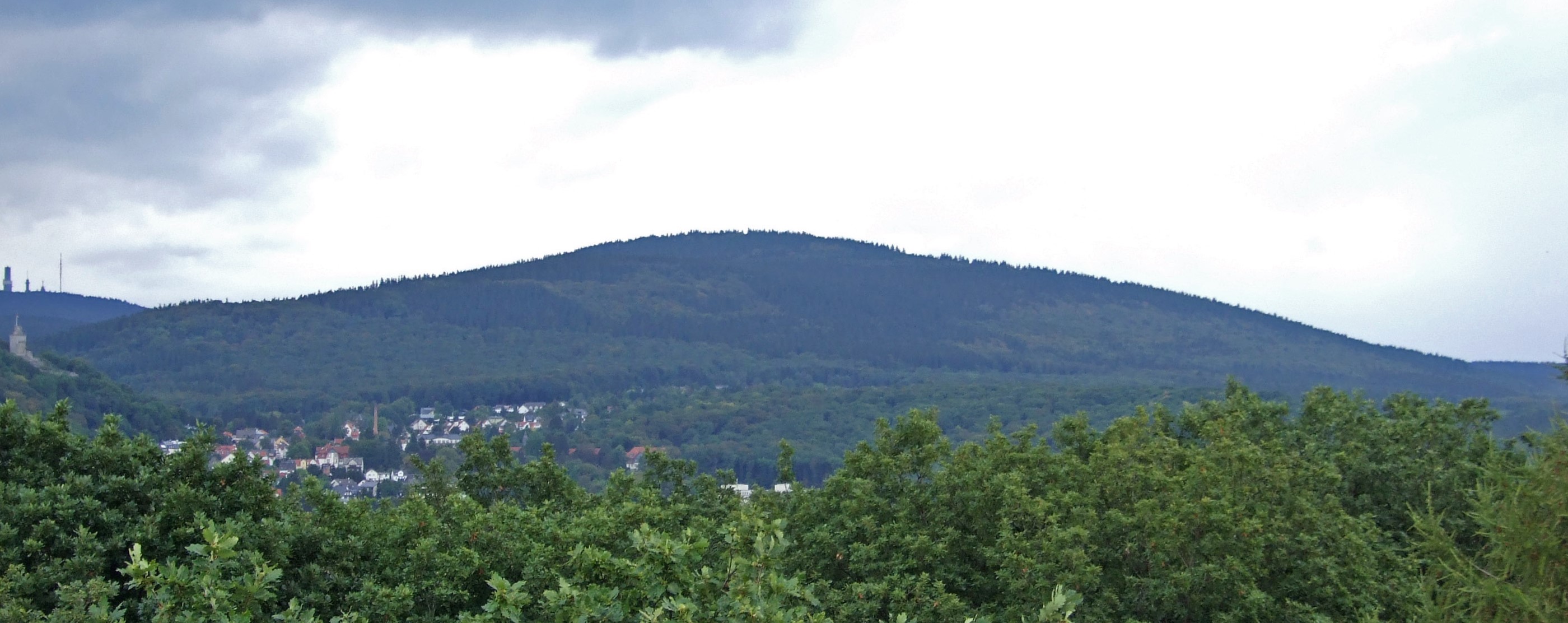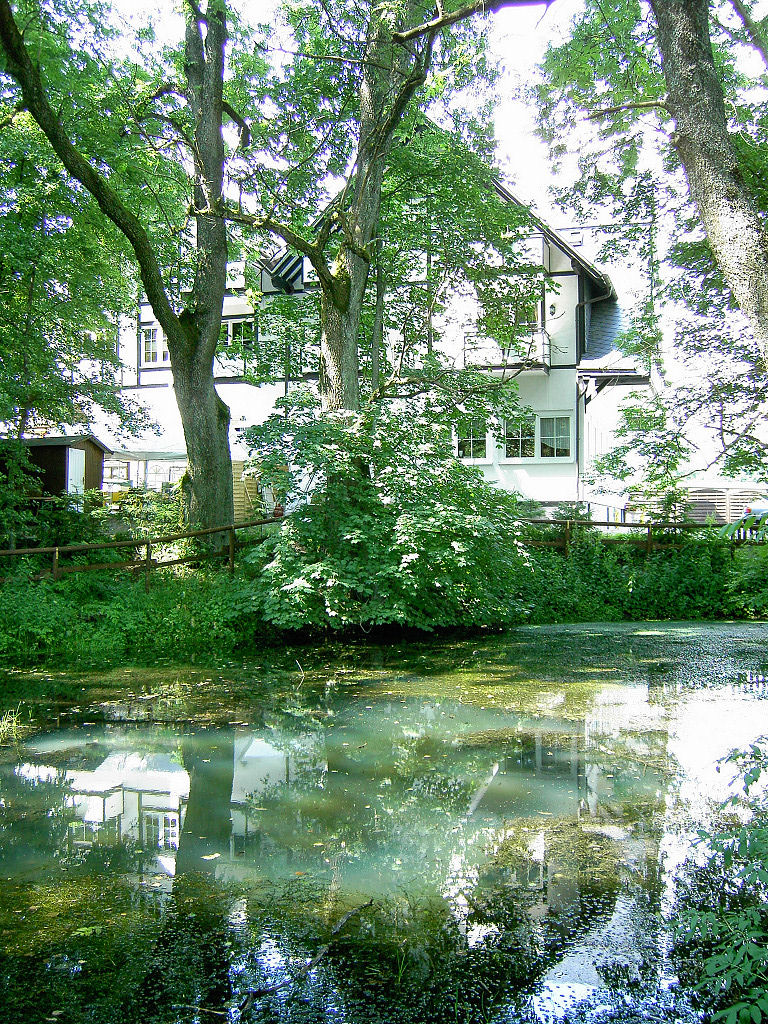|
Taunus
The Taunus is a mountain range in Hesse, Germany, located north of Frankfurt. The tallest peak in the range is ''Großer Feldberg'' at 878 m; other notable peaks are ''Kleiner Feldberg'' (825 m) and ''Altkönig'' (798 m). The Taunus range spans the districts of Hochtaunuskreis, Main-Taunus-Kreis, Rheingau-Taunus, Limburg-Weilburg, and Rhein-Lahn. The range is known for its geothermal springs and mineral waters that formerly attracted members of the European aristocracy to its spa towns. The car line Ford Taunus is named after it. Description It is a relatively low range, with smooth, rounded mountains covered with forest. The Taunus is bounded by the valleys of the Rhine, Main, and Lahn rivers and it is part of the Rhenish Slate Mountains. On the opposite side of the Rhine, The Taunus range is continued by the Hunsrück. For geographical, ecological and geological purposes the Taunus is divided in three parts: *Anterior Taunus ''(Vortaunus'' or ''Vordertaunus)'' in the south, ... [...More Info...] [...Related Items...] OR: [Wikipedia] [Google] [Baidu] |
Ford Taunus
The Ford Taunus is a family car that was sold by Ford Germany throughout Europe. Models from 1970 onward were built on the same basic construction as the Ford Cortina MkIII in the United Kingdom, and later on, the two car models were essentially the same, differing almost only in the placement of the steering wheel. The model line was named after the Taunus mountain range in Germany, and was first made in 1939, and continued through several versions until 1994. Taunus G93A (1939–1942) / G73A (1948–1952) The Ford Taunus G93A was a development of the Ford Eifel, and used the same 1172-cc four cylinder engine, but in a longer chassis and a streamlined body. It was the first German Ford to have hydraulic brakes. Due to the war, production was interrupted from 1942 to 1948; 7,128 were made, including estate cars and light vans. Taunus M-series (1952–1968) From 1952 to 1968, all German Fords were called the Taunus, using the model names 12M, 15M, 17M, 20M, and 26M (on some S ... [...More Info...] [...Related Items...] OR: [Wikipedia] [Google] [Baidu] |
Altkönig
The Altkönig is the third highest mountain of the Taunus range in Hesse, Germany, reaching a height of . Its summit is lies within the borough of Kronberg im Taunus not far from the village of Königstein im Taunus which is part of Falkenstein in the Hessian county of Hochtaunuskreis. With an isolation of 2,450 metres and a prominence of over 136 metres above saddle at the Fuchstanz () leading to the Kleiner Feldberg (), the Altkönig is one of the most striking peaks in the Taunus. Together with the Großer Feldberg () and Kleiner Feldberg it forms the crown of the High Taunus ( Feldberg-Taunus ridge); unlike the Feldberg, however, it does not lie on the main ridge itself but rises to the south and parallel with it. On the Altkönig are the Altkönig Circular Rampart and on its spurs the Lips and Victoria Temples, the White Wall and the Hünerberg Circular Rampart. In the local region are Altkönig School in Kronberg, the local Altkönig Foundation and Altkönig Ha ... [...More Info...] [...Related Items...] OR: [Wikipedia] [Google] [Baidu] |
Frankfurt Am Main
Frankfurt, officially Frankfurt am Main (; Hessian: , "Frank ford on the Main"), is the most populous city in the German state of Hesse. Its 791,000 inhabitants as of 2022 make it the fifth-most populous city in Germany. Located on its namesake Main River, it forms a continuous conurbation with the neighboring city of Offenbach am Main and its urban area has a population of over 2.3 million. The city is the heart of the larger Rhine-Main metropolitan region, which has a population of more than 5.6 million and is Germany's second-largest metropolitan region after the Rhine-Ruhr region. Frankfurt's central business district, the Bankenviertel, lies about northwest of the geographic center of the EU at Gadheim, Lower Franconia. Like France and Franconia, the city is named after the Franks. Frankfurt is the largest city in the Rhine Franconian dialect area. Frankfurt was a city state, the Free City of Frankfurt, for nearly five centuries, and was one of the most import ... [...More Info...] [...Related Items...] OR: [Wikipedia] [Google] [Baidu] |
Frankfurt
Frankfurt, officially Frankfurt am Main (; Hessian: , "Frank ford on the Main"), is the most populous city in the German state of Hesse. Its 791,000 inhabitants as of 2022 make it the fifth-most populous city in Germany. Located on its namesake Main River, it forms a continuous conurbation with the neighboring city of Offenbach am Main and its urban area has a population of over 2.3 million. The city is the heart of the larger Rhine-Main metropolitan region, which has a population of more than 5.6 million and is Germany's second-largest metropolitan region after the Rhine-Ruhr region. Frankfurt's central business district, the Bankenviertel, lies about northwest of the geographic center of the EU at Gadheim, Lower Franconia. Like France and Franconia, the city is named after the Franks. Frankfurt is the largest city in the Rhine Franconian dialect area. Frankfurt was a city state, the Free City of Frankfurt, for nearly five centuries, and was one of the most import ... [...More Info...] [...Related Items...] OR: [Wikipedia] [Google] [Baidu] |
Anterior Taunus
The Anterior Taunus (german: Vordertaunus or ''Vortaunus'') is a natural region within the Hessian Central Upland range of the Taunus (major unit group 30) in Germany that lies south of the High Taunus (301). The region lies below the main ridge of the Taunus. Literature * Reimer Herrmann: ''Vergleichende Hydrogeographie des Taunus und seiner südlichen und südöstlichen Randgebiete.'' Wilhelm Schmitz Verlag, Gießen, 1965, . * Eugen Ernst: ''Naturpark Hochtaunus.'' (HB Naturmagazin draußen). Hamburg, 1983. * Ingrid Berg, Eugen Ernst, Hans-Joachim Galuschka, Gerta Walsh: ''Heimat Hochtaunus.'' Frankfurt am Main, 1988, . * Alexander Stahr, Birgit Bender: ''Der Taunus – Eine Zeitreise.'' Borntraeger-Verlag, Stuttgart, 2007, . * Eugen Ernst: ''Der Taunus – Ein L(i)ebenswertes Mittelgebirge.'' Frankfurt, 2009, . External links {{Commons, Taunus Map services Bundesamt für Naturschutz The German Federal Agency for Nature Conservation (german: Bundesamt für Na ... [...More Info...] [...Related Items...] OR: [Wikipedia] [Google] [Baidu] |
Rheingau-Taunus
Rheingau-Taunus is a Kreis (district) in the west of Hesse, Germany. Rheingau-Taunus-Kreis is part of the Darmstadt region; its main administrative seat is Bad Schwalbach. Outposted sections of the local administration are located in Idstein and Rüdesheim am Rhein. Neighbouring districts are the Hessian districts of Limburg-Weilburg, Hochtaunuskreis, Main-Taunus-Kreis, district-free Wiesbaden and Mainz-Bingen and Rhein-Lahn which are located in Rhineland-Palatinate. History From 983 to 1803, the Rheingau area belonged to the Electorate of Mainz and was then merged into the new Duchy of Nassau. The Untertaunus region was part of the Earldom of Katzenelnbogen. From 1816 onward, the whole area of the district became part of the Duchy of Nassau. After the 1866 Austro-Prussian war, Nassau was annexed by Prussia and formed the new province of Hesse-Nassau. In 1867, the province was divided into districts. Therefore, the districts of Rheingau and Untertaunus were created. After ... [...More Info...] [...Related Items...] OR: [Wikipedia] [Google] [Baidu] |
Main-Taunus-Kreis
Main-Taunus is a Kreis (district) in the middle of Hessen, Germany and is part of the Frankfurt/Rhine-Main Metropolitan Region as well as the Frankfurt urban area. Neighboring districts are Hochtaunuskreis, district-free Frankfurt, Groß-Gerau, district-free Wiesbaden, Rheingau-Taunus. It is the second most densely populated rural district in Germany. History Before the era of Napoleon, the area was divided into many small bits and pieces of independent states. The most prominent of these were the Archbishopric of Mainz and the territory ruled by the Lords of Eppstein, who were later succeeded by the Landgraves of Hesse-Darmstadt. In 1806 the area became united for the first time as part of the Duchy of Nassau, which was annexed to Prussia in 1866. In 1928 the Main-Taunus district was formed when the cities of Wiesbaden and Frankfurt annexed adjoining areas, leaving the remaining unincorporated areas in the former districts of Wiesbaden and Höchst too small to survive on ... [...More Info...] [...Related Items...] OR: [Wikipedia] [Google] [Baidu] |
Großer Feldberg
The Großer Feldberg ('Great Field Mountain') is, at a height of 879.5 metres, the highest elevation of the Taunus mountains, and of the entire Rhenish Massif. It is situated in the Hochtaunuskreis district in Hesse, Germany. The Feldberg/Taunus transmitter mast is set at the top of the mountain. A lookout tower affords long-distance views onto the Taunus hills to the North and West and over and beyond the Rhein-Main plain to the South and East. A restaurant and a small hut offer food and drinks. The mountain is accompanied by the ''Kleiner Feldberg'', a subsidiary of 825 m at a distance of 1.3 km to the south-west, and the 798-metres-high Altkönig, 2.3 km to the south-east. Height There is a considerable uncertainty on the exact height of the Großer Feldberg, because the height given in the various sources varies up to several metres. * At the summit is the Feldberg summit cross including the summit register and information board, giving a height of 879.5 metres ... [...More Info...] [...Related Items...] OR: [Wikipedia] [Google] [Baidu] |
Hochtaunuskreis
The Hochtaunuskreis is a ''Kreis'' (district) in the middle of Hesse, Germany and is part of the Frankfurt/Rhine-Main Metropolitan Region. Neighbouring districts are Lahn-Dill, Wetteraukreis, district-free Frankfurt, Main-Taunus, Rheingau-Taunus, Limburg-Weilburg. The Hochtaunuskreis and the Landkreis Starnberg regularly compete for the title of the wealthiest district in Germany. History The district was created in 1972 when the previous districts Obertaunus and Usingen were merged. Geography Geographically it covers the Taunus mountains. The highest elevation of the Taunus, the 881 meter high Großer Feldberg, is in the district. Lowest elevation of the district with 130m is the village ''Ober Erlenbach''. The wealthy towns in the district's densely populated southern part belong to the Frankfurt urban area. Coat of arms The coat of arms is a dimidiation of the arms of the Obertaunus district in the left half and the Usingen district in the right half. It shows a lion, the ... [...More Info...] [...Related Items...] OR: [Wikipedia] [Google] [Baidu] |
Wiesbaden
Wiesbaden () is a city in central western Germany and the capital of the state of Hesse. , it had 290,955 inhabitants, plus approximately 21,000 United States citizens (mostly associated with the United States Army). The Wiesbaden urban area is home to approximately 560,000 people. Wiesbaden is the second-largest city in Hesse after Frankfurt, Frankfurt am Main. The city, together with nearby Frankfurt am Main, Darmstadt, and Mainz, is part of the Frankfurt Rhine Main Region, a metropolitan area with a combined population of about 5.8 million people. Wiesbaden is one of the oldest spa towns in Europe. Its name translates to "meadow baths", a reference to its famed hot springs. It is also internationally famous for its architecture and climate—it is also called the "Nice of the North" in reference to the city in France. At one time, Wiesbaden had 26 hot springs. , fourteen of the springs are still flowing. In 1970, the town hosted the tenth ''Hessentag Landesfest'' (En ... [...More Info...] [...Related Items...] OR: [Wikipedia] [Google] [Baidu] |
Hesse
Hesse (, , ) or Hessia (, ; german: Hessen ), officially the State of Hessen (german: links=no, Land Hessen), is a States of Germany, state in Germany. Its capital city is Wiesbaden, and the largest urban area is Frankfurt. Two other major historic cities are Darmstadt and Kassel. With an area of 21,114.73 square kilometers and a population of just over six million, it ranks seventh and fifth, respectively, among the sixteen German states. Frankfurt Rhine-Main, Germany's second-largest metropolitan area (after Rhine-Ruhr), is mainly located in Hesse. As a cultural region, Hesse also includes the area known as Rhenish Hesse (Rheinhessen) in the neighbouring state of Rhineland-Palatinate. Name The German name '':wikt:Hessen#German, Hessen'', like the names of other German regions (''Schwaben'' "Swabia", ''Franken'' "Franconia", ''Bayern'' "Bavaria", ''Sachsen'' "Saxony"), derives from the dative plural form of the name of the inhabitants or German tribes, eponymous tribe, the Hes ... [...More Info...] [...Related Items...] OR: [Wikipedia] [Google] [Baidu] |
Lahn
The Lahn is a , right (or eastern) tributary of the Rhine in Germany. Its course passes through the federal states of North Rhine-Westphalia (23.0 km), Hesse (165.6 km), and Rhineland-Palatinate (57.0 km). It has its source in the Rothaargebirge, the highest part of the Sauerland. It meets the Rhine at Lahnstein, near Koblenz. Important cities along the Lahn include Marburg, Gießen, Wetzlar, Limburg an der Lahn, Weilburg and Bad Ems. Tributaries to the Lahn include the Ohm, Dill, the Weil and the Aar. The lower Lahn has many dams with locks, allowing regular shipping from its mouth up to Runkel. Riverboats also operate on a small section north of the dam in Gießen. Source area The Lahn is a -long, right (or eastern) tributary of the Rhine in Germany. Its course passes through the federal states of North Rhine-Westphalia (23.0 km), Hesse (165.6 km), and Rhineland-Palatinate (57.0 km). The Lahn originates at the Lahnhof, a locality of Nenkers ... [...More Info...] [...Related Items...] OR: [Wikipedia] [Google] [Baidu] |






